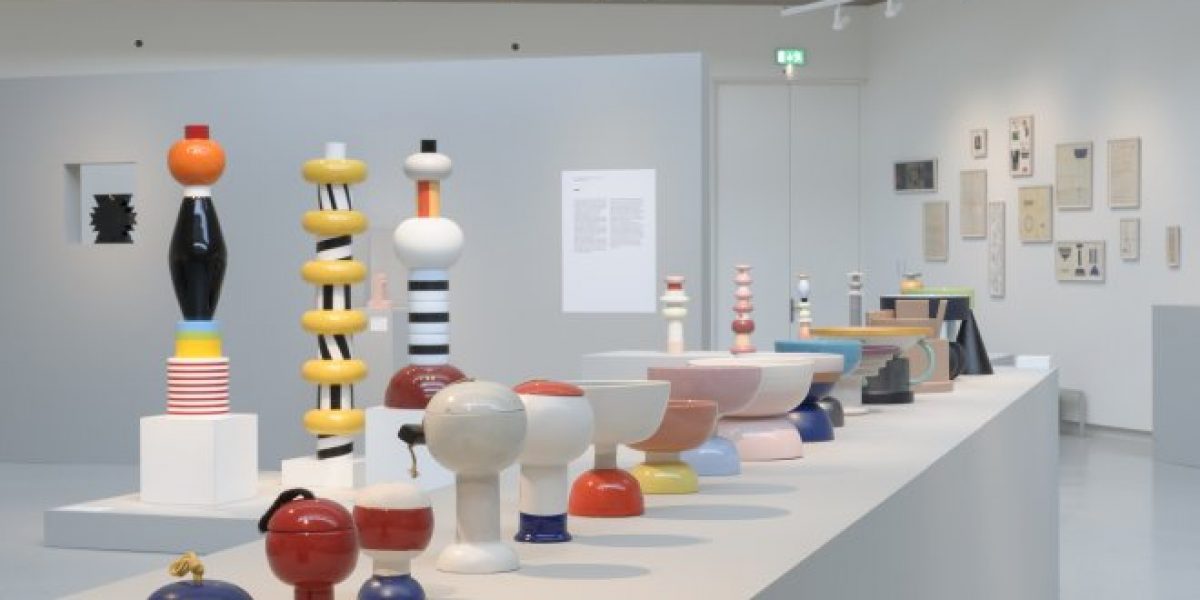Celebrating Ceramics: 100 years of Ettore Sottsass
On the 14th of September the famous Italian architect and designer Ettore Sottsass was born exactly one hundred years ago. As a tribute to one of the greatest designers of the twentieth century, the Stedelijk Museum ‘s-Hertogenbosch presents a selection from his ceramic oeuvre.

foto: Ben Nienhuis
Ettore Sottsass
Ettore Sottsass (1917-2007) began his career in 1947 as an interior and industrial designer. He was also an important innovator in this field. His designs for home interiors, office equipment, furniture and household accessories exerted a strong influence on avant-garde design in the 1960s and 1970s. He was a co-founder of the famous Memphis group in 1981. Besides his work for Memphis, Sottsass was also active as a designer for Alessi, Artemide and Olivetti.
Ceramics as a primal form of design
Ceramics formed a recurrent fascination during Sottsass’ long career. His unique vision of design is most fully expressed in his designs for ceramics, from his first vases in the mid-1950s to the last sketches just before his death. Sottsass approached all consumer articles, particularly those in ceramics, as ritual tools, meaningful implements for everyday life. He regularly reverted to primal forms with a symbolic charge, such as the teapots from the Indian Memory series.
In his own words: ‘Ceramics is older than the Bible and Jesus Christ, older than all poetry ever written, older than goats and cats, older than houses or metal’. Ceramics is the most personal medium for Sottsass and it features often in his many writings as a primal form of design.
Sottsass in Den Bosch
The Stedelijk Museum ’s-Hertogenbosch has a long history with Ettore Sottsass. Het Kruithuis, the predecessor of the present museum, organised the first Memphis exhibition in the Netherlands in 1984. The first exhibition dedicated exclusively to his ceramics was put together in close consultation with Sottsass in 1995. Since then his work has been shown regularly in the museum. His design in ceramics is well represented in the collection of the Stedelijk Museum ’s-Hertogenbosch.
